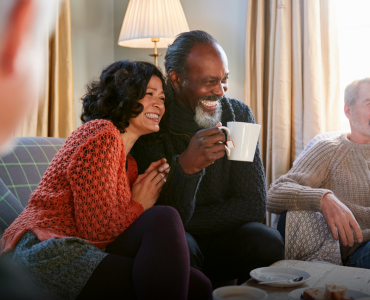
Osteoporosis is a condition that causes weakened bones. Meaning they are more prone to fractures. This disease is often noted as the “silent disease” This is due to the fact it progresses without obvious symptoms. Until a fracture occurs. This is why it is important to understand the causes and risk factors of this silent disease. In this blog, you will learn about the causes and risk factors, as noted by the National Institute of Arthritis and Musculoskeletal Diseases and the Mayo Clinic. That way you can protect your bones from this disease.
What is Osteoporosis?
Osteoporosis is a condition where your bones lose density. This makes them brittle. When this happens it leads to having a higher risk of fractures. Your hips, spine, and writs are highly susceptible to these fractures. Your bones are living tissue. They are constantly being broken down and replaced. Osteoporosis occurs when the creation of the new bone doesn’t keep up with the removal of the old bone
Causes of Osteoporosis
Many different factors add to the development of osteoporosis, including:
- Sex: You have a greater chance of getting this disease if you are a woman. Women have a lower peak bone mass. As well as smaller bones compared to men. However, it is important to note that men are still at risk for this disease. Especially once they are 70 years of age or older.
- Age: As you age, your bone loss increases. In addition to your new bone growth taking longer. Due to this over time your bones gradually become weaker. This adds to your risk.
- Physical Frame: Typically slender thin-boned men and women have a higher risk of getting osteoporosis.
- Family History: A family history of osteoporosis or fractures adds to your risk of getting this disease. Your genetic factors can influence your bone density.
- Diet: Not having a balanced diet can add to your risk. Especially if you have a low intake of calcium and vitamin D.
- Lifestyle: Living a healthy life is key to keeping your bones strong. If you rarely do physical activity it adds to a higher rate of bone loss. This is also true if you are a heavy drinker and smoker. Both drinking and smoking have negative effects on your bone health.
Prevention and Detection
Preventing osteoporosis involves lifestyle choices. Here are some tips:
- Calcium and Vitamin D: Eat a diet rich in calcium and vitamin D. Dairy products and leafy greens are excellent sources. Also, sun exposure and supplements can help maintain good vitamin D levels.
- Regular Exercise: Do muscle-strengthening exercises. Activities like walking, jogging, and resistance training. These activities help keep your bones strong.
- Healthy Lifestyle Choices: Avoid smoking. Along with lowering your alcohol consumption.
- Bone Density Testing: Regular bone density tests (DEXA scans) are recommended for those at risk. Especially postmenopausal women and older adults. Early detection can lead to interventions that slow bone loss. As well as prevent fractures.
Visit Clinicas
It is vital to understand the risks and factors that lead to osteoporosis. Knowing this it can lead to effective prevention of this disease. You can adopt a healthy lifestyle. This can be done by making sure you have a healthy nutrient intake. In addition to staying away from substances that can add to bone loss. Early detection and prevention are key. That way you can lower the impact of this silent disease. Take charge of your bone health and visit Clinicas del Camino Real, Inc. today. Make an appointment with your Primary Care provider to discuss your concerns. There you can ask questions and work together to lower your risk of getting osteoporosis. With Clinicas you can build a future with stronger bones. As well as fewer fractions. Your bones will thank you for it!

